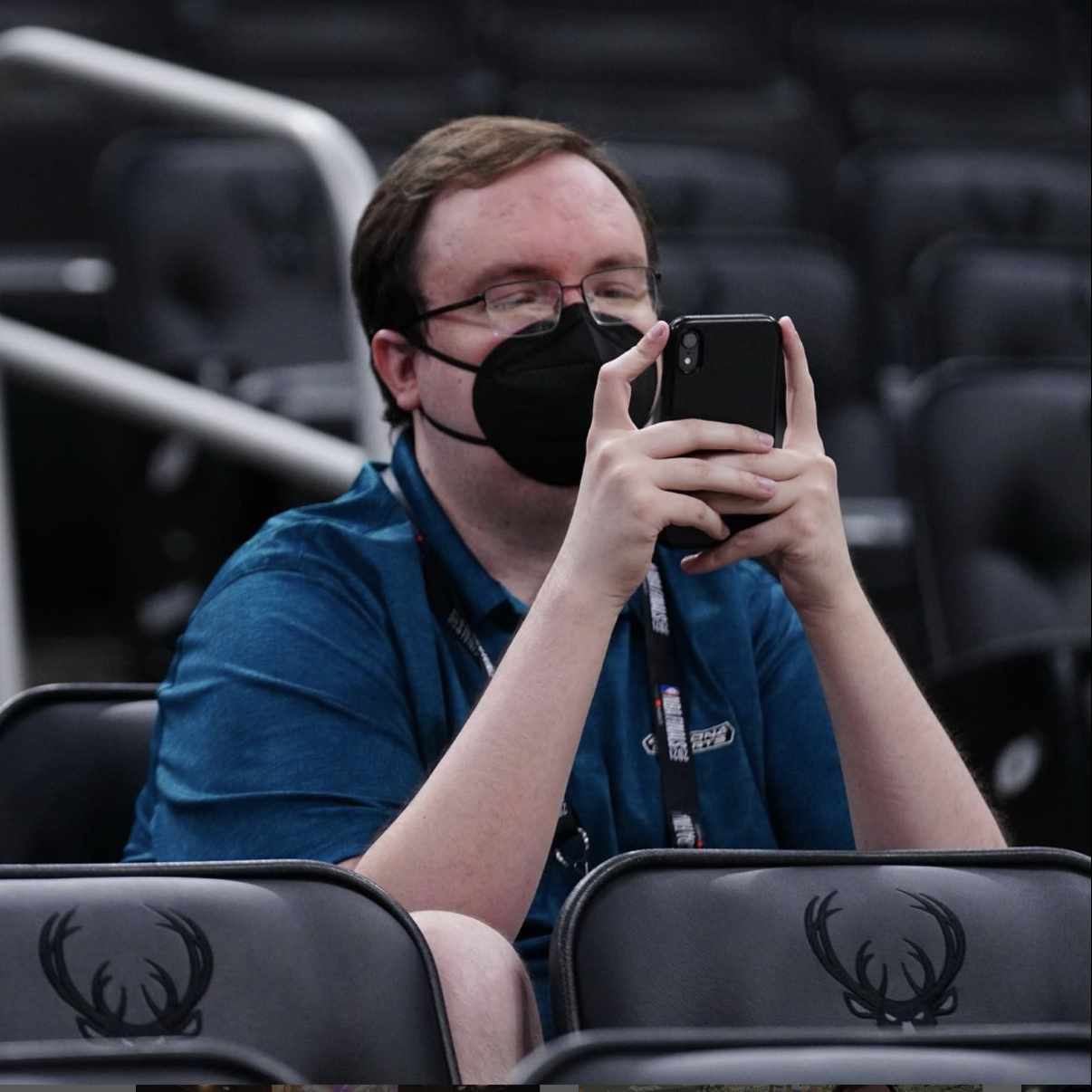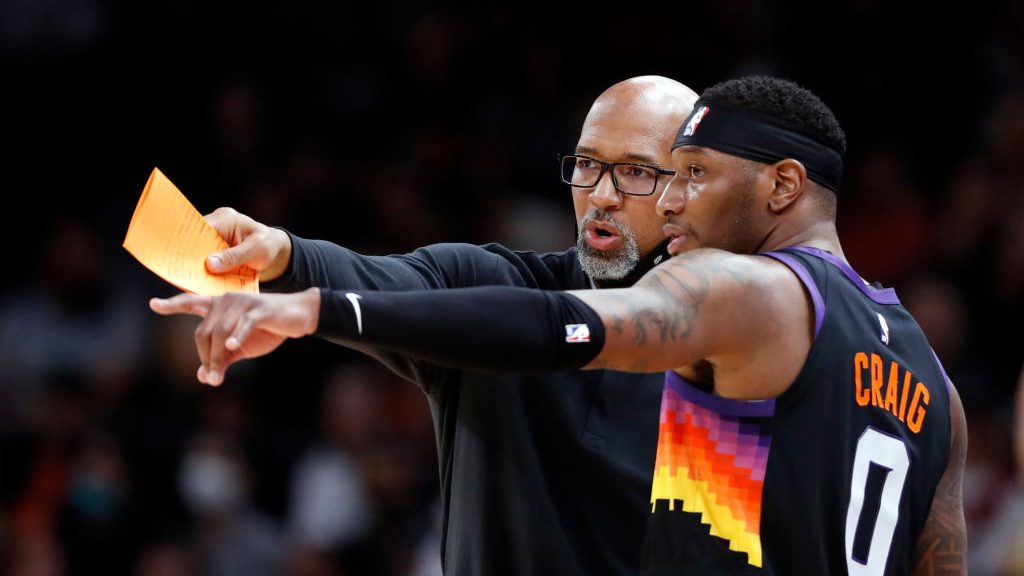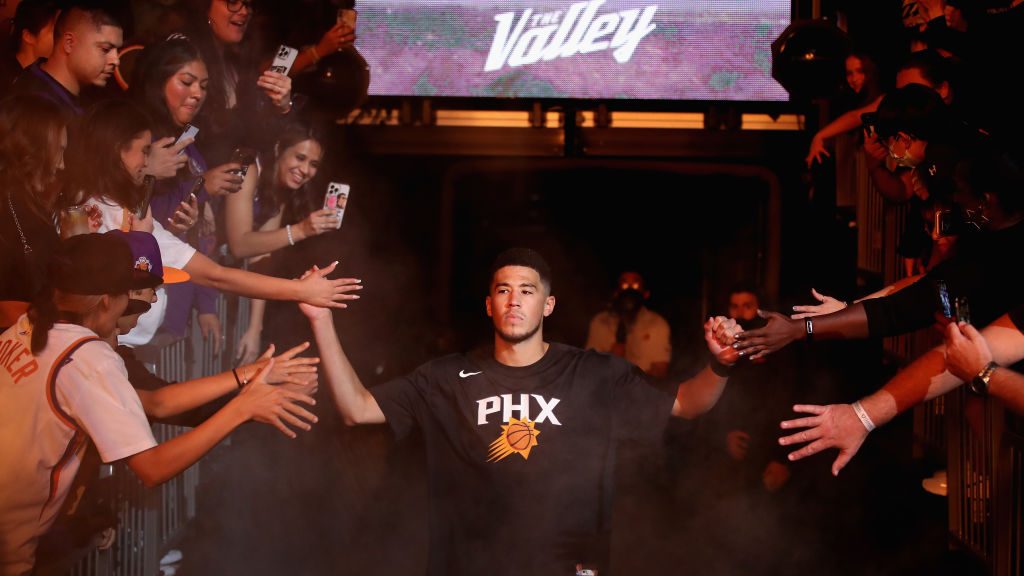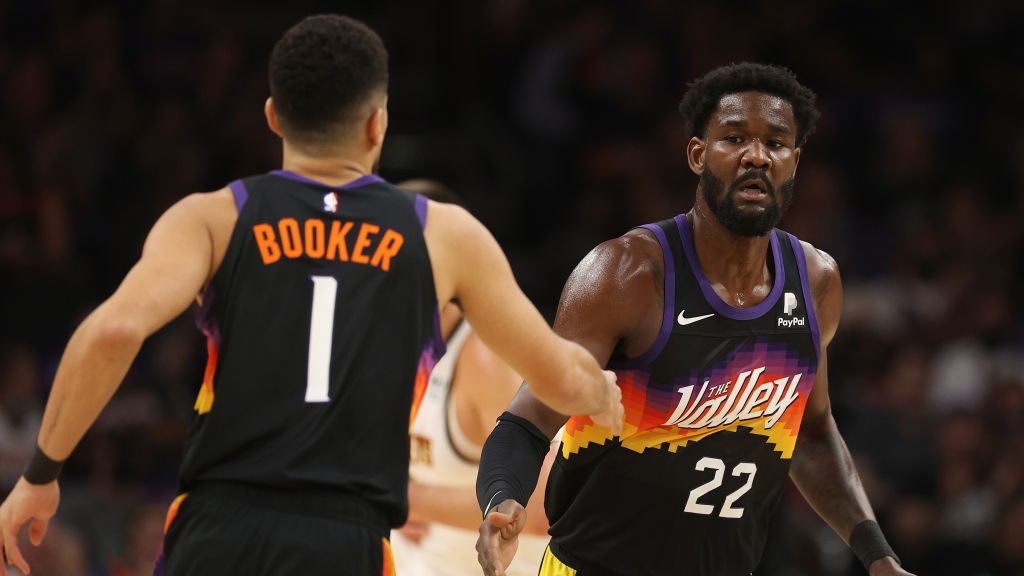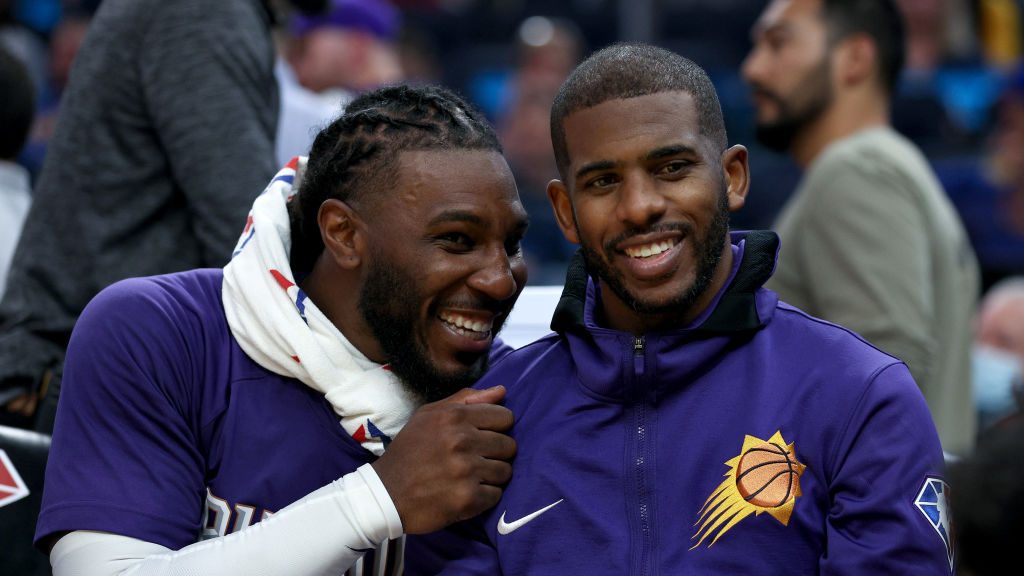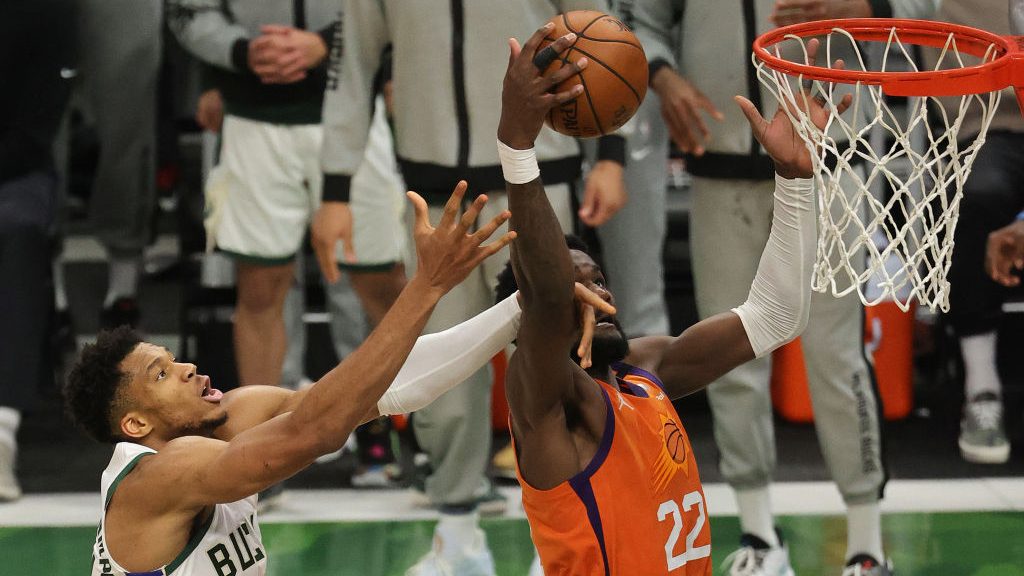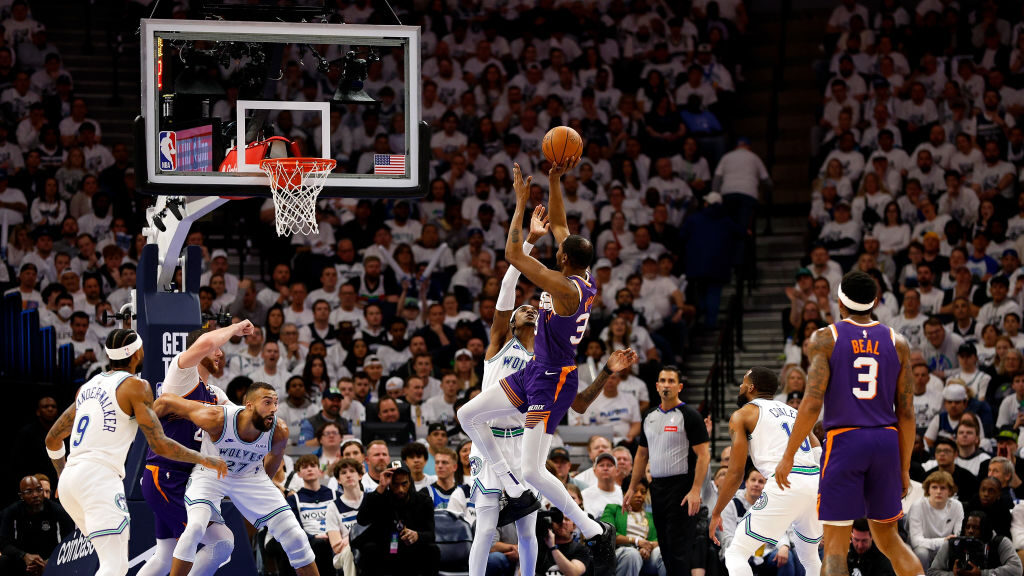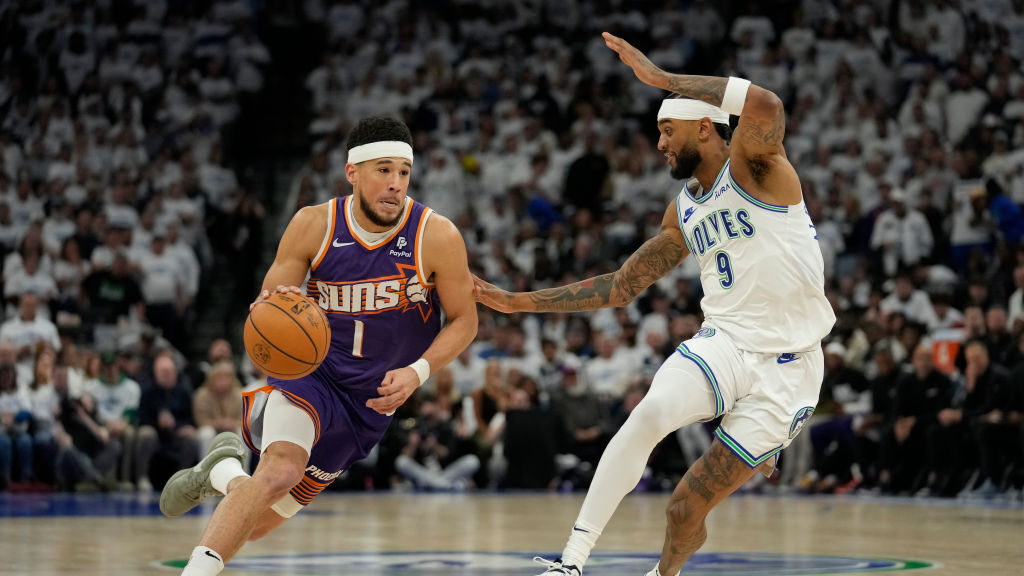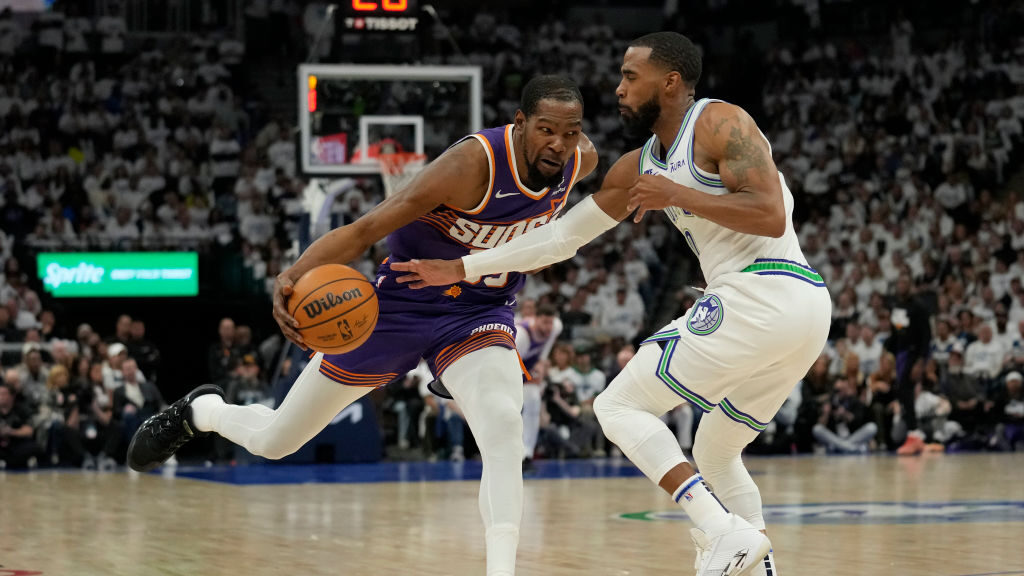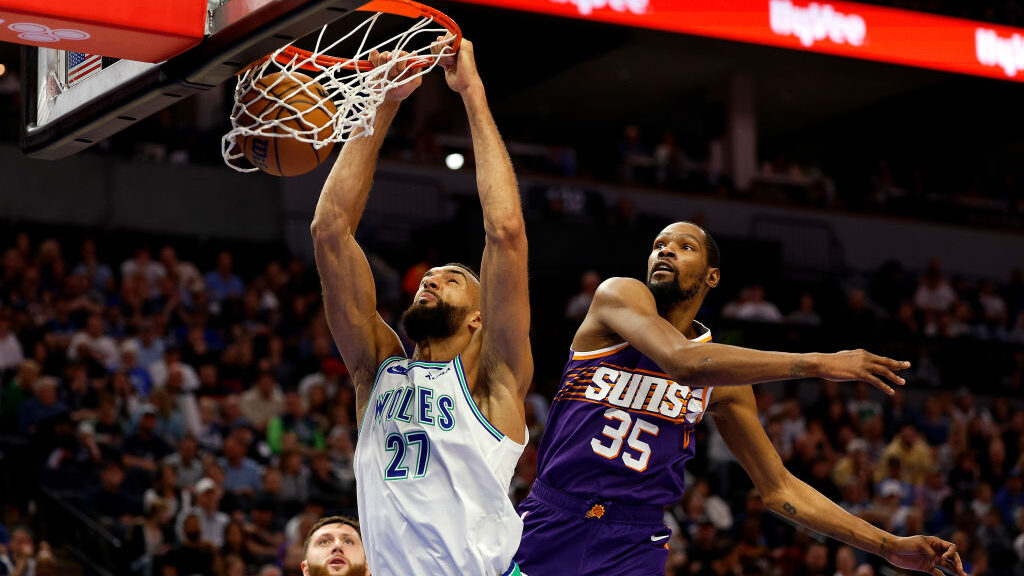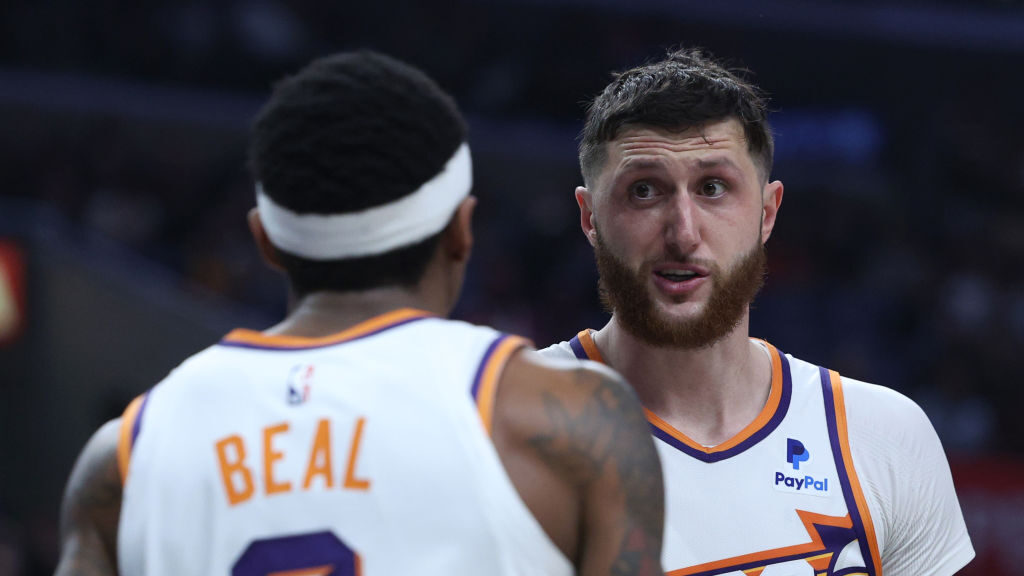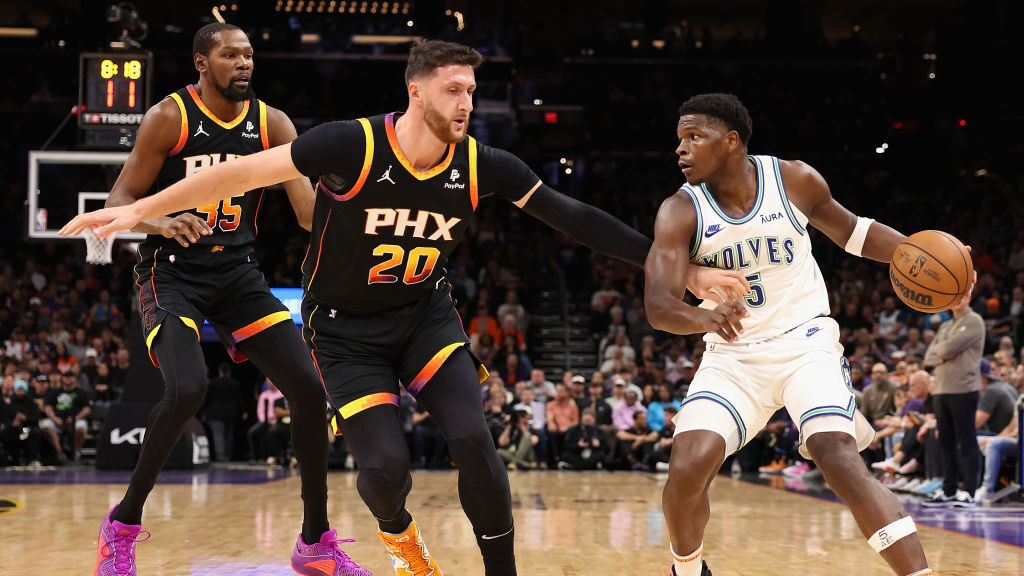Dario Saric stays involved, close with Phoenix Suns during rehab process
Apr 14, 2022, 3:54 PM | Updated: Apr 15, 2022, 7:45 am
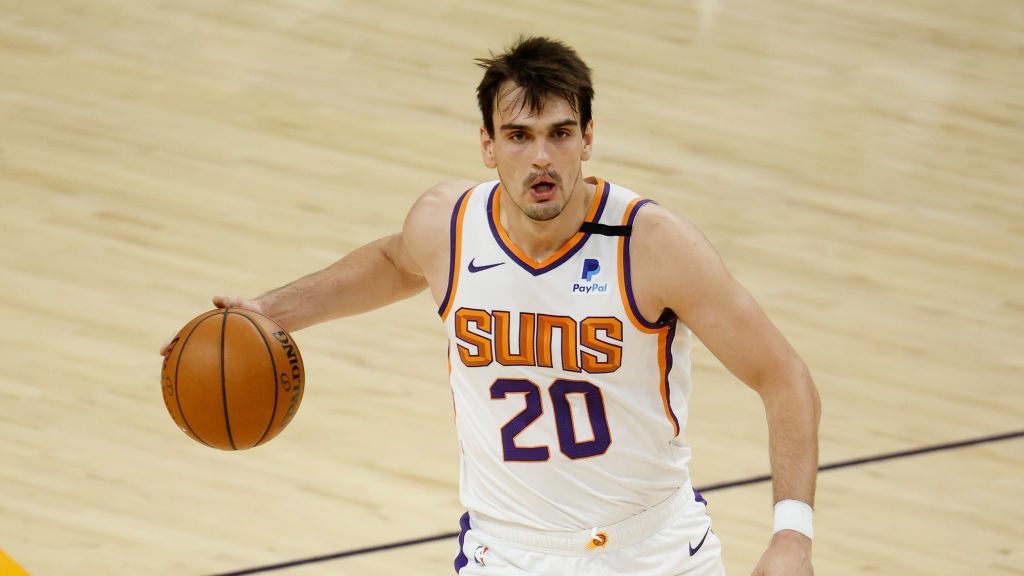
Dario Saric #20 of the Phoenix Suns handles the ball against the Atlanta Hawks during the NBA game at Phoenix Suns Arena on March 30, 2021 in Phoenix, Arizona. The Suns defeated the Hawks 117-110. (Photo by Christian Petersen/Getty Images)
(Photo by Christian Petersen/Getty Images)
PHOENIX — When members of the Phoenix Suns come into their practice facility, they will usually see center Dario Saric already there. When they leave, Saric probably hasn’t.
The 28-year-old is still rehabbing a torn ACL he suffered in Game 1 of the NBA Finals over nine months ago. Saric, who spoke for the first time on Thursday since media day, said he is basically out for the rest of the season unless there’s an emergency situation where multiple Suns big men get hurt and he’s feeling healthy enough to play.
Coming into the facility from the perspective of a media member, I’ve gone over the six-plus months of the season from hardly seeing Saric while he was getting work done off the court, to watching his gradual return to it. Saric was shooting the ball under the basket sitting in a chair, then able to do so a bit on the move while standing up to doing ball-handling work and then rejoining his shooting group.
It’ll give you a newfound respect for where these guys really have to start from and how far they have to go before getting fully up to speed and ready for a professional basketball game.
Saric described it well. He said he felt like a weightlifter through some of the process but is now starting to feel like a basketball player again with how much basketball activity he’s able to do again compared to a few months ago.
“It was challenging,” he said. “Obviously, my season is [in] a bit different direction than (the) real team but I’m still here in my mind with the team and my heart too.”
Saric had to battle through a desire to be on the court but knowing it was not the right time for his body.
“I know it’s sometimes when you’re injured you kind of know you’re going to be out a while but sometimes your mind is not ready,” he said. “Obviously, I’ve played basketball for 20 years and I want to be out on the court.”
Saric rehabbing with the Suns may seem like the norm in the NBA but it is not unusual for players to do their own extensive rehab away from the team. Recently, New Orleans Pelicans star Zion Williamson made headlines when he was doing just that for a foot injury.
Suns center JaVale McGee, a veteran of 13 years, said he didn’t rehab with his team earlier in his career and didn’t realize what it meant to the group.
“I’ve been in situations when I didn’t know at the time how important it was when you’re injured to stay with the team,” McGee said on March 11. “I was more separated from the team and looking in hindsight that’s 20/20 I wish I had been more involved with the team when I was injured.”
Saric said that a lot of the times it comes down to trust, and Saric has always believed in the people around him within the Suns organization. The members of the medical staff had him aware from his earliest points of what he needed to do and what his journey would entail while pushing him to make progress.
It should not surprise you that Saric chose this path if you’ve heard enough of his coaches and teammates talk about him.
Much like a few years ago when I had to convince Suns fans that Mikal Bridges was the funniest player on the team, even though his personality wasn’t showing much at that point, it might surprise you to hear that Saric is just as much of a jokester as the majority of the roster.
On top of that, he is endlessly praised for the type of teammate he is.
Head coach Monty Williams has said in the past that Saric is one of his favorite players he’s ever coached. Point guard Chris Paul has said the same when it comes to how easy Saric is to play with and how good of a teammate he is.
So, as you’d expect, Saric knows what it means for him to stay around the guys and still sit behind the bench at home games the last couple of months.
“If one guy is really like in one way negative or doesn’t want to be a part of the team or something, guys see that,” he said. “Can’t interrupt the chemistry between the players. I really like felt it there with the team. I’m like three years already here with the team. This is my second home.”
McGee painted the picture for how it looks for a fellow teammate.
“Dario’s locked in,” McGee said. “He’s here early getting his work in, he’s on the bench with us cheering us on, he’s in the huddle with us when we do our little pregame thing. He’s been a part of the team the whole time.”
Williams expanded on the impact of that.
“Dario’s in a support role now so I’m sure that helps,” Williams said on March 12. “Especially when guys come out of the game or guys [aren’t] playing, they can turn to Dario and have a conversation about anything else but basketball and then somewhere along the line they may start talking about the system or what we do and Dario can be a help there.
“He’s just a good guy. Anytime you have Darios on your team, you know they’re going to be an asset and not a detriment.”
Guards Devin Booker and Paul both spoke on the boost they themselves can get from seeing the improvement in Saric’s recovery.
“We love seeing him around, I love seeing the progress,” Booker said on April 5. “From on the table getting worked on to in the weight room to, not see his first steps, but see him back running on the court. I love seeing the progression and seeing the work. Those guys come in way before we get here and are here after. It’s always tough having an injury but the road back, being around the guys, I know it helps him out a lot.”
“It’s nice for us to see the work he’s putting in day in and day out,” Paul said Wednesday. “Dario’s a hard worker and I’m sure it helps him too getting the rehab and us still be playing. It just shows how we’re a team and we try to do everything together.”
Saric understands how he can still be a benefit to the team. He’s been here since Williams got here, so he’s a system player that fully understands what Williams wants to achieve on both ends of the court. The feedback Saric provides on the bench can be useful and help the Suns win games.
“It’s unbelievable to support and to be there for them, to give some advice,” Saric said. “Maybe I’m more cooler head than them during the game, maybe give some advice, especially DA. … It was really, really good there. I was there for the team because I really feel it, I really want it.”
And when you look at it from Saric’s perspective, forward Jae Crowder explained how it can help Saric once he comes back.
“It keeps him engaged,” Crowder said on March 18. “When the time for him to come back, he’s rolling a little bit. He’s able to see scouts, he’s able to hear the things we’re going through on the gameday, he’s still engaged. I think that’s critical. Obviously, he’s putting the work in and I think he would put the work in if he was there somewhere else but him still just being engaged in our group, it’s critical for him and for our group camaraderie.
“Whenever he comes back, he’s hitting the ground rolling right where he left off.”
Saric admitted he needed the environment in the first month of his injury, which involved a lot of time at the facility as the only player there. He “needed that peace” to get over losing in the Finals and having his role be what it was in it.
After that, though, the “more happy (and) more positive” vibes the fellas brought once they were around the facility again, telling Saric they were going to make it back the Finals again this year, gave him encouragement.
“Guys are happy for me and I’m really happy for them, too,” he said.

